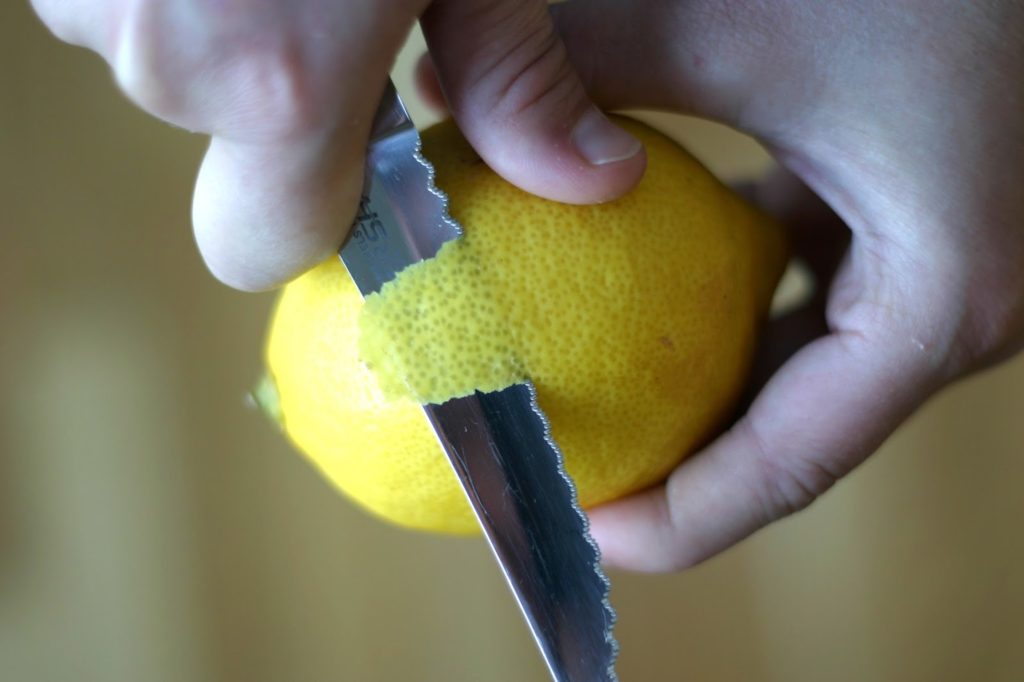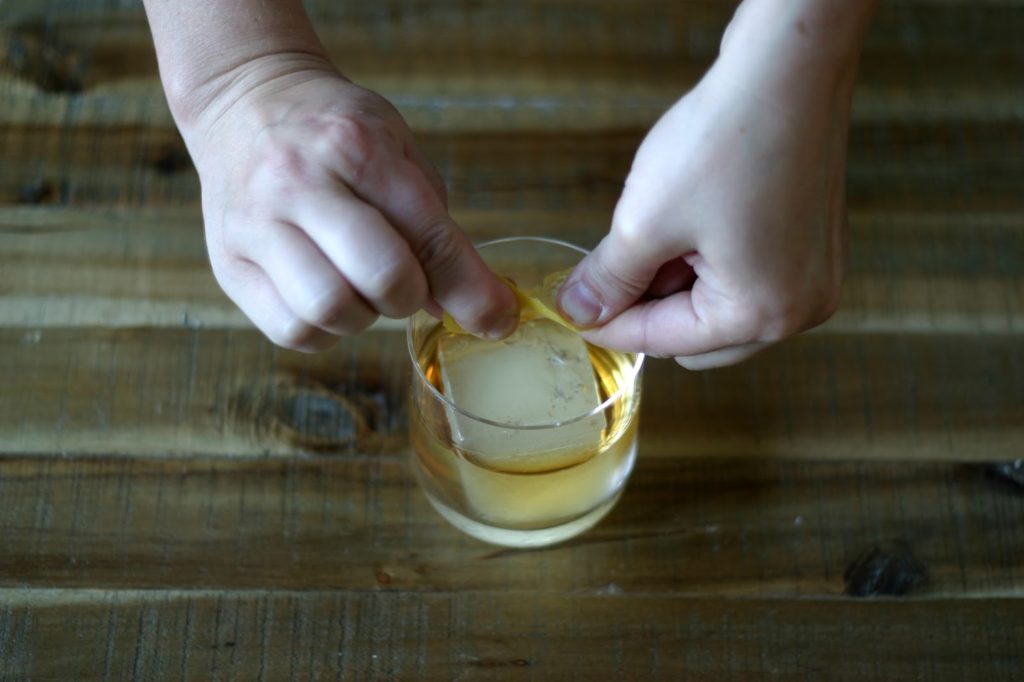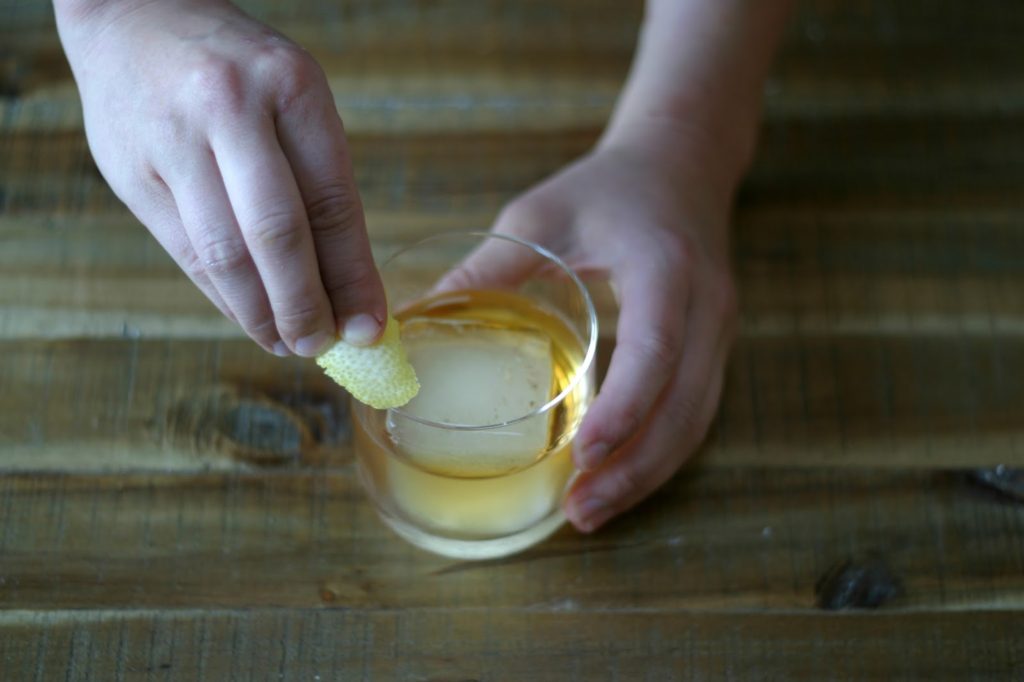Sorry for the silence! We just painted our living room and kitchen, and our apartment was in complete disarray for days. I think we may have made a cocktail or two, but there was no doing it neatly or photographing it; they were rewards for hard work. Now everything is back where it should be and the walls are no longer an unpleasant off-white. But we’re going on vacation next week, so I won’t be blogging much then either. But I’ll try to post a couple of things between now and then.
There are a few reasons why I decided to call this blog Garnish. One, admittedly, is that it was a cocktail-related word that hadn’t already been taken. But the more I’ve thought about it, the more appropriate it seems. As I’ve gotten more careful about making cocktails, I’ve come to realize that a garnish can really make a drink. They are rarely just decorative. A hint of herbs or citrus can have a huge impact. Not only that, but a garnish is to a cocktail sort of what a cocktail is to me: a beautiful, delicious thing that isn’t absolutely necessary but really adds something when you have it.
One of the most common garnishes you will see called for in a cocktail is a citrus twist. I’ve posted plenty of recipes that use them, but I’ve never really gone through how to properly garnish a drink with one. Unlike many garnishes, which are just plopped into the drink or hung on the side of the glass, a twist is a bit more involved. And a lot of people get it wrong. For one thing, it’s not a slice of fruit. Just the peel. If you’re meant to garnish the cocktail with any of the inner fruit, the recipe will refer to a slice, wedge, or wheel of citrus.
A twist also doesn’t have to be curly. A twist is called a twist because of the action that the bartender performs over the drink, not its shape. The idea is to release the oils in the skin of the citrus fruit into the cocktail. These oils contain compounds called terpenes that give citrus fruit their distinct aromas. If you garnish your drink correctly, they’ll also lend that aroma to your cocktail.
So, if you’re making a cocktail that should be garnished with a twist, here’s what you should do:
1. Wash your fruit well; the peel is going in your drink, after all.
2. Using a paring knife or a peeler, slice a thin section of peel from your fruit, as pictured above. You want to avoid getting much of the white pith on the peel. This part of the fruit is bitter and can add that bitter flavor to your cocktail. Go for a shallow cut, so that you can see the pores of the fruit through the underside. Just aim for an elongated shape. Sometimes I’ll trim mine into something more creative, but the basic twist is just vaguely oval-shaped.
3. Take the piece of peel in both hands with the two sides pinned between your thumb and forefinger. Twist it over the drink with the outer peel facing down. This will release the oils into the drink. If you look carefully at the surface of your cocktail, you should be able to see the oils floating on the top.
4. Next, rub the outside of the peel along the sides of the glass to coat it with the oils as well.
5. Finally, drop the peel into the cocktail. You can actually discard it if you wish, and some recipes recommend doing so. Yep, that’s right – it doesn’t even have to go in there if you don’t want. I’ve seen bartenders bring a cocktail over to a patron so they could see them do the twist before they threw out the peel.









Love this post! So many bartenders don't know the truth about the twist! Rubbing it on the rim is essential. Thanks for educating the world! Lol
If you are doing any volume (and/or drinking), cutting towards yourself is a recipe for disaster. I've even seen my coworkers bleed from using a Y-peeler doing it towards themselves.
Good point! You're completely right. I usually cut towards myself because I feel like it gives me more control, but I need to practice doing it properly.